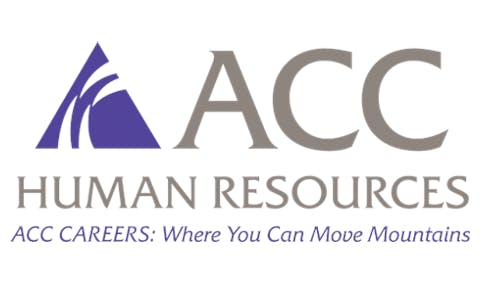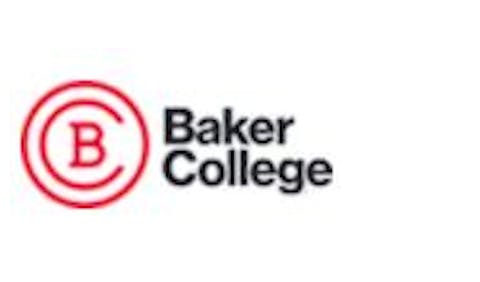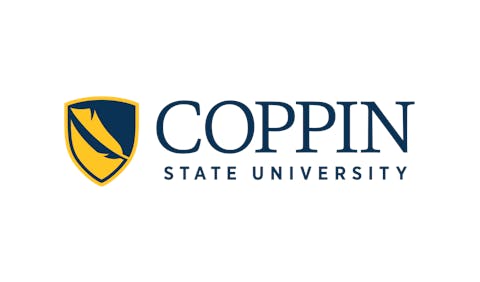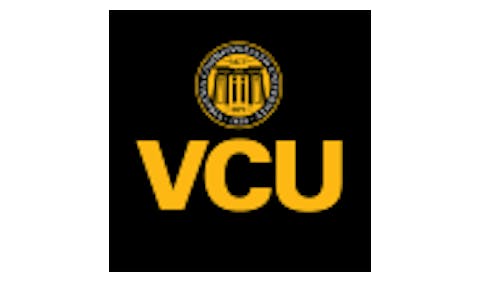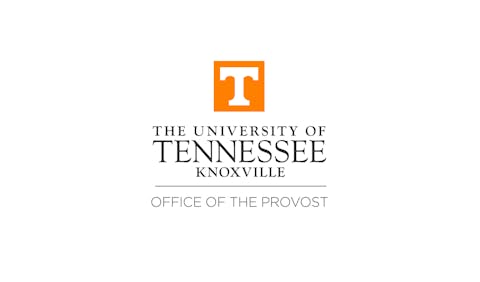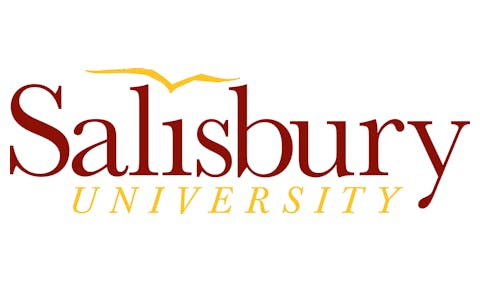 2025 Commencement, Cerritos College
2025 Commencement, Cerritos College
Twenty years of Excelencia in Education’s Examples of Excelencia show the impact that the selected programs have had on students. These programs have developed strategies that address academic barriers, and the data demonstrates that these strategies have greatly enhanced student success.
Founded in 2004 by Deborah A. Santiago and Sarita E. Brown, Excelencia in Education leads a national network of results-oriented educators and policymakers that understand the U.S. economy’s need for an educated workforce. Excelencia works to promote access and advance Hispanic and other post-traditional students in higher education.
“[To achieve] the value proposition of making sure that students are well served and they can have access to the American dream, we have to show what’s working,” says Santiago. “We are looking for programs that can show their intentionality in serving Latino and all students. … They are able to show that they are reaching out to students, they see their strengths and the opportunities to improve them, and they’re doing something about it.”
These four Examples were selected from programs submitted for consideration from across the country. The 12 finalists announced in August all serve Latino and post-traditional students with asset-based programming. Five crucial things that these four are doing: increasing affordability, addressing academic barriers, creating a sense of belonging, offering experiential learning and utilizing wraparound services.
“We hope these Examples of Excelencia are able to inform and compel others to do the same because if it’s just these pockets of success and improvement you’re not going to see the significant national evolution change that we’re looking for,” says Santiago. “What you see in these programs is they might start with Latinos, but they don’t stop there. Piloting and testing the things that are working…can be institutionalized and serve more broadly, impacting other students.”
ASSOCIATE LEVEL
GENERAL MOTORS AUTOMOTIVE SERVICE EDUCATION PROGRAM
CERRITOS COLLEGE, NORWALK,
CALIFORNIA
Cerritos College, a community college in Norwalk, California, launched its General Motors Automotive Service Educational Program (GM ASEP, launched nationally in 1979) in 1982 in response to the regional demand for skilled technicians and the lack of accessible, manufacturer-specific automotive training in Southeast Los Angeles County. It provides students with technical skills, industry-recognized certifications and the practical experience necessary to thrive in the automotive workforce. It is a five-semester program that combines classroom instruction with paid work-based internships at GM dealerships.
Joe Mulleary, automotive technology department chair, says the majority of students in the program are first-generation college students. “The opportunity here is to within a short period of time get specialized skills and then go into the workforce and earn a good living,” he says. In 2023–24, 78% of GM ASEP students earned their degrees on time, and 96% of Latino GM ASEP graduates were employed by GM dealerships.
Santiago describes this program as a pipeline for economic mobility. The combination of classroom instruction, paid work-based internships and mentors promotes success. Many of the faculty members — both full-time and part-time — are alumni of automotive programs at Cerritos. Mulleary says the dedicated instructors keep up their technical knowledge commensurate with GM dealership technicians.
“When students are in the program, they get a lot of mentoring from faculty,” says Mulleary. “I know every one of these students because it’s a cohort. I just started a brand new group of 24. I work individually with them to help get them jobs. We have an evening program now too. We have a lot of ways to help these students get jobs and deal with issues they may have.”
Some students arrive at college academically underprepared and some don’t immediately see the value of academics. Faculty members work with them to understand that to be successful they need both the classroom and hands-on education. Students see firsthand that program graduates are going into the workforce and thriving, which is hugely motivating.
“When I go and visit students, which is part of what we do in the work experience piece, I see former students from other years, so there’s a lot of mentorship going on at the dealership too to help them along,” Mulleary says. “Some graduates from over the years have become managers, which helps to support our program.”
The average age of students in the program is mid-20s, but there are some 18-year-olds. There is recruiting at local high schools, and some courses are offered via dual enrollment, which introduces students to higher education.
This program serves as an example of the importance of partnerships between institutions of higher education and businesses and companies. “It’s an example of how strategic partnerships that align education and workforce needs can really expand access to opportunity,” said Santiago. “It shows what’s possible and that others can emulate.”
Support for the program comes from both Cerritos College and General Motors. With fewer young people entering the profession, GM corporate knows it needs to invest in developing the much needed workforce. Mulleary is now the Western region college faculty representative for GM ASEP on the association’s board of directors, traveling to Detroit several times a year.
“When it comes to connecting with the corporate partners, the dealership partners, the people who hire our students, we’ve got to be really in tune with them,” says Mulleary. Input from the dealerships led to changes in the program structure — they requested that students be available to work full days on Mondays and Fridays. Several years ago, he reconfigured curriculum and scheduling to accommodate the needs of the dealerships. That also led to the development of the night program, which is proving quite popular.
“One thing that has been great is that every month on our campus the local region of dealerships hold a service club meeting,” he says. “I’m in front of a lot of these folks, and I get a chance to speak and basically share the status of our program. If there is anybody that needs a job, I voice that and we get help right away.”
BACCALAUREATE LEVEL
ÁNDALE LATINO RESEARCH TRAINING PROGRAM
CALIFORNIA STATE UNIVERSITY, LONG BEACH
There are significant rates of obesity and chronic conditions, such as Type 2 diabetes and hypertension, in the Latino community. Advancing Nutrition Development through Alliance for Education and Leadership (ÁNDALE) Latino Research Training Program addresses this. Located at California State University, Long Beach (CSULB), ÁNDALE aims to train undergraduate students from underrepresented populations to do research in nutrition and health science fields with specific attention to Latino nutrition and disease prevention. It is housed in the CSULB Center for Latino Community Health, Evaluation and Leadership Training. The program engages the students in research with a faculty mentor to prepare them for graduate school and/or the workforce.
“This program can fill the gap and fill in the research opportunities for Latino and other underrepresented students in nutrition and health science,” says Santiago. “Health is one of the top three disciplines where Hispanics earn degrees. This brings the research component, so it’s not just the practitioner element.”
The program is designed for juniors and seniors with a major focused on food and nutrition as well as health and social sciences. It provides the unique opportunity to receive culturally responsive training to address nutrition-related chronic conditions in the Latino community. ÁNDALE begins with an intensive one-week training session followed by nine weeks of hands-on research (90 hours) with faculty mentors, which provides students an understanding of the research process, community-based participatory research and professional development. Some students continue to work with the faculty mentor after the nine weeks of the program.
“The focus of our training is for anyone going into the health fields to be prepared to address Latino health disparities, specifically chronic diseases,” says Dr. Melawhy Garcia, associate professor, Department of Health Science, and director of the Center for Latino Community Health, Evaluation and Leadership Training. “We are training all of the students who go through ÁNDALE to be culturally competent, to be respectful and prepared to address Latino chronic diseases.
“We know there are cultural barriers, structural barriers and political barriers that will come into play, so we know that students have learned from us about the specific risk factors for Latinos and their chronic diseases,” she adds. “Whether it be health education, nutrition counseling or some type of physical therapy, they’re going to be able to recognize the culture and work closely with Latinos to improve their health.”
Participants receive a monthly stipend and $1,600 to travel to a conference. Between 2020–24, 53 students (12 to 14 per cohort) had a 100% retention rate, and 100% of Latinx ÁNDALE participants either graduated or were on track to graduate. The next cohort of ÁNDALE has not begun as the program awaits renewal of its federal funding and pursues foundation funding as well as asking CSULB to consider institutionalizing the program.
Students in health science are trained to be health educators, program managers, case managers and other positions in public health as well as positions involving nutrition and kinesiology. Garcia notes that a degree is not sufficient for employment, and ÁNDALE addresses the need for experience in culturally competent research. Students in the nutrition field have done research related to the Supplemental Nutrition Assistance Program, collecting data on college students’ access to food pantries. There was also research on family-based interventions for Latino children and their parents to learn about nutrition. The participants become excited about graduate school and the possibility of far-reaching impact.
“There is exposure to career planning,” says Garcia. “We do a student panel where current Ph.D. students and nutrition dietetic students in graduate programs talk about the opportunities and benefits of graduate education. A lot of times, this is the first exposure to this. They meet staff and faculty like myself, who are first-generation, and they get motivated.”
ÁNDALE training is interdisciplinary, so the participants are exposed to diverse career fields. Some students are inspired to pursue public health and work on disease prevention and even public health policy.
“We do collect a one-year follow-up survey,” says Garcia. “We actually remain pretty connected to our students. They often will continue to reach out to faculty mentors for letters of recommendation for either jobs or graduate school, and they send us updates on what happened. … We are a familia, so they feel really connected to their peers, their cohort, and also the faculty and staff that mentor them.”
GRADUATE LEVEL
CROSSING LATINIDADES HUMANITIES
RESEARCH INITIATIVE
UNIVERSITY OF ILLINOIS CHICAGO
Launched in 2021 through the University of Illinois Chicago (UIC) and funded by the Mellon Foundation, the mission of the Crossing Latinidades Humanities Research Initiative is to enhance Ph.D. persistence and increase completion. Current funding runs until 2027. The program currently works with 20 universities that have both Research 1 and Hispanic Serving Institution designation to increase the number of doctoral students and faculty in the field of Latino/a/x Studies. Utilizing a cohort model, it also supports graduate scholarship and emerging areas of inquiry.
“Based on studies of when doctoral students tend to leave the doctorate pathway, [the goal] was to create this program to strengthen that very moment in giving support to doctoral students who are considering maybe dropping out,” says Dr. Olga U. Herrera, managing director of the Crossing Latinidades Humanities Research Initiative. About 90 participants have gone through the program and a new cohort recently began.
“This program creates a pathway and articulates that opportunity,” Santiago says. It provides a way to support students who want careers in academia, she notes, which is essential as Hispanics are significantly underrepresented in the professoriate and in research. Herrera notes, “One of the things is to address the pipeline, and retention is very important.”
The participants, who are third and fourth-year Latino humanities studies doctoral students, will largely remain based at their individual institutions for this one-year training research fellowship, which includes an intensive in-person 10-day Summer Institute in Latino Studies Methodologies and Theories held at UIC. The overall goal is to enhance their research skills, intellectual curiosity, creativity, critical thinking and productive writing as they develop their dissertation topics, complete exams and defend proposals so they are deemed All but Dissertation (ABD) by the conclusion of the program.
“We are very interested in the research aspect and the intellectual aspect of the field itself,” Herrera says. “We get people in different humanities or humanistic social sciences. … We’re located in the world of ideas and new knowledge. We’ve noticed in the three cohorts that we have worked with … more multi-disciplinarity, new approaches. For example, we’re seeing people working with artificial intelligence in aspects of Latino literature and creative writing. It allows us to put our fingers on the pulse of changes and it’s really exciting.”
Participants span history, art, literature, creative writing, sociology and anthropology. This year, a medical anthropologist is among the fellows. Over the course of the year, they take part in a Writing LAB to help guide proposals, workshops on how to navigate the dissertation process, information on how to get published in academic journals and preparation to enter the job market. In addition to receiving mentorship, they work as research assistants with a faculty member 10 hours a week. There is also a speaker series, networking and monthly check-ins.
“During the year of the fellowship, they do not need to work outside or teach, but can concentrate on their studies,” says Herrera. The 20 universities provide the fellows with tuition and fee waivers and health insurance. The program provides each fellow with a $30,000 stipend. “What we observed is incredible productivity in terms of the participants achieving dissertation proposals, defending them and becoming ABD.”
All 27 fellows in the 2022–23 cohort and 24 fellows in the 2023–24 cohort achieved ABD status and advanced to candidacy. Four fellows who have completed Ph.D.s have secured academic jobs and a fifth has a professional job.
One does not need to be Latinx to qualify for this program. Rather it is about building trained scholars interested in the wide range of research possibilities. “There is importance in being able to tell stories of community across this country and have a critical lens that adds to the beauty and diversity of what this country is about and what it can be,” Santiago says. “We’re finding ways that can inform and compel how we move forward in this country and being more inclusive in doing so.”
“We’re supporting 30 new emerging scholars every year in the field of Latino/a/x Studies,” says Herrera. “They’re going to conferences, they’re sharing their information, and with the training and faculty research mentors we expect and hope they will continue with this research aspect and growing the field.”
COMMUNITY-BASED ORGANIZATION LEVEL
AVANZA RGV: ACCELERATING LATINO PROSPERITY THROUGH EDUCATION & CAREER PATHWAYS
VALLEY INITIATIVE FOR DEVELOPMENT AND ADVANCEMENT, MERCEDES, TEXAS
Avanza RGV: Accelerating Latino Prosperity Through Education & Career Pathways is a program of the Valley Initiative for Development and Advancement (VIDA) in Mercedes, Texas, a community-based organization in the Rio Grande Valley (RGV), a predominantly Hispanic area of Texas where nearly 25% of families live below the poverty line.
Launched in 1995, VIDA’s mission is to empower RGV Latino students through comprehensive educational support, career development and holistic services that address systemic barriers to economic mobility. AVANZA RGV’s goal is to increase Latino student enrollment in high-demand career pathways, placing them in two-year and four-year institutions as well as training programs. Program graduates typically show an average income increase of 200% within one year of completing the program.
“Currently, we view low-income as up to 250% of the federal poverty guidelines; that is the benchmark we use when determining income eligibility,” says Felida Villarreal, president and CEO of VIDA. Applicants must be 18 years of age or older — the average age of participants is around 27 — and they must be eligible to work in the U.S. Also, participants must be interested in one of the career paths that AVANZA RGV sponsors. The focus is on high-demand occupations relevant to the region, such as healthcare and STEM fields.
“In the last five years or so we’ve branched out into the skilled trades, occupations that offer opportunities that have short-term training for individuals that may not be necessarily prepared or interested in a traditional two-year or four-year degree, but nonetheless offer a competitive wage employment opportunity, like welding, commercial electrician, construction and plumbing,” says Villarreal.
If an applicant is unsure what career path he or she would like to pursue, an O*NET® assessment is available to assess the applicant’s skills, strengths and weaknesses so the counselors on staff can provide tailored guidance. VIDA has a staff of 22, and six are full-time career counselors, who meet with participants on a weekly basis. Counselors not only check on a participant’s academic progress, but also introduce topics like studying tips, mental health and communication skills. There are also monthly workshops focused on professional development.
“This program really stands out because it looks at some of those systemic barriers to economic mobility in that geography, and because they provide holistic support and wrap-around services to students, many of them low-income, first-gen college goers,” says Santiago.
On average, about 800 participants are served per year. To keep student loan debt to a minimum, AVANZA RGV provides nearly $2 million in financial assistance annually. This includes direct financial assistance for tuition, books, childcare, transportation and emergency needs. Participants are also connected to additional financial resources and support services while ensuring they complete financial literacy training. Counseling and support services are available in Spanish, but participants much be proficient in English to meet job requirements. Program participants have an education completion rate of 81–83%. Currently, approximately 75–80% of graduates are placed in a job within six months.
“There is a case management approach,” says Santiago. “Retention improves when they know there is someone who can help guide them.”
Villarreal says VIDA and the AVANZA program work with local community leaders and with local industry and employers to inform the program. “At the end of the day, VIDA wants to make sure that the participants we are supporting in their respective career paths and degree journeys can find competitive employment in the region,” says Villarreal. “In order to do so, we need to make sure that our workforce training programs are in alignment with our regional industry demand.”
Half of VIDA’s board of directors is comprised of business and community leaders from different industries that include law, banking, higher education and healthcare, making sure the organization keeps programming relevant and informed. There is also close collaboration with the local workforce center and the Texas Workforce Commission. The local city government and local economic development entities provide information about current employment opportunities and the industries and businesses they’re trying to bring to the region.
“In turn, we can help them develop and build that workforce that will be necessary not only for today but for tomorrow’s jobs,” says Villarreal.









